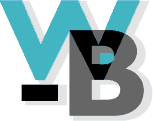

Developing and Communicating Software Architecture
3 days
Suitable for teams up to 12 or slightly larger groups. Price:Contact us at training@wirfs-brock dot com. Instructor travel and lodging expenses are extra.
This course, based on the book Software Systems Architecture: Working with Stakeholders Using Viewpoints and Perspectives, provides software architects with skills and knowledge that enable them to prepare, present, and explain their architectures to diverse stakeholders interested in understanding and evaluating their architecture. It is also suited for developers, product managers, quality assurance, and other stakeholders who need to understand how to express their concerns and see that they are represented in a system's architecture.
Objectives
At the completion of this course attendees should be able to
Course Philosophy
Students learn by doing. There is ample class-time opportunity to explore concepts and techniques and develop skills. Class is roughly half lecture and half short exercises, discussions, and in-depth labs. Each learning cycle, which lasts between a half hour and two hours, consists of:
Students present their work for review and comment. An instructor-led discussion of students' work reinforces practices and summarizes key learnings. Short in-class readings provoke stimulating discussions on the nature of software architecture descriptions, the value of understanding different stakeholders' perspectives, how to evaluate different architecture presentation alternatives, and where and when precision is needed.
Topics
Materials
Software Systems Architecture: Working with Stakeholders Using Viewpoints and Perspectives, Nick Rozanski and Eoin Woods, Addison-Wesley 2005
In addition to the course text, each student will receive a 90 page course guidebook developed by Wirfs-Brock Associates.
For additional information please contact us at training@wirfs-brock.com
|
Entire Site © Wirfs-Brock Associates 2005 - 2022.
Click here to contact the Webmaster. |
|
||
|
|
|
|